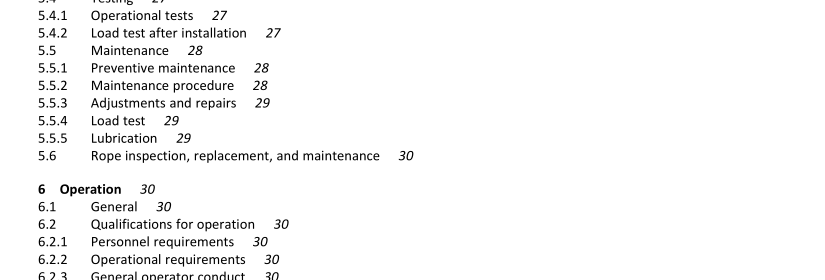CSA Z150.3-17 pdf download – Safety code on articulating boom cranes.
Carrier — the platform and undercarriage of a wheel or track/crawler-mounted crane specifically designed for transporting the rotating crane structure. Notes: 1) The carrier might or might not provide its own travel mechanism. 2) The carrier is distinguished from a commercial truck vehicle in that it is not normally designed to transport personnel, materials, or equipment other than crane rotating structure and is normally designed for off-road use. Column — a structural member attached to a base that supports the boom structure (see Figure 1). Commercial truck-mounted crane — a crane, mounted on a frame attached to a commercial truck chassis, retaining a payload capability whose power source can power the crane. Commercial truck vehicle — a motor vehicle designed primarily for the transportation of property in connection with business and industry. Competent person — a person who, by possession of a recognized degree or certificate of professional standing, or by extensive knowledge, training, and experience, has successfully demonstrated the ability to resolve or solve problems relating to the subject matter, and who is familiar with the provisions of this Standard that apply to the subject matter and their applications. Control station — Emergency — control station intended for limited use following failure of both the primary and secondary control stations. Note: Emergency control functions are typically limited to the return of the crane to a transportable or stowed position. Primary — the location from which the crane is intended to be operated. Secondary — optional set of crane control levers, often located on the opposite side of the crane base to the primary control station.
Control system — the interface between the controls and the actual components that provides movements of the crane. Controls — a means for controlling the movement functions of the crane (see Figure 1). Counterweight (ballast) — see Ballast (counterweight). Crane (articulating boom crane) — a base, a rotating column, and a minimum of two hydraulically operated articulating boom sections that can extend telescopically. Notes: 1) The operator may control the crane at ground level, from a top mounted seat, a stand, or a cabin, or remotely by cable or radio connection. 2) The crane is capable of hoisting, lowering, and swinging loads at various radii from a hook or load-handling device positioned on the end of the boom. Crossover points — the points of rope contact in multiple-layer spooling of rope on a drum, where the rope crosses the preceding rope layer.
Drum — the cylindrical member around which a rope is wound for raising and lowering the load when so equipped. Engineer — a person in the engineering profession who has specific expertise in the matter under consideration and is licensed to practice in a jurisdiction in Canada. Flange point — a point of contact between the rope and drum flange where the rope changes layers. Linkage system — a connecting system that allows the boom hoist cylinder to deliver the required forces during the articulated movement of the boom. Load, block lower — the assembly of hook or shackle, swivel, sheaves, pins, and frame suspended by the hoisting ropes. Load, block upper — the assembly of hook or shackle, swivel, sheaves, pins, and frame mounted on the boom tip. Load hoist — a hoist drum and rope-reeving system used for hoisting and lowering loads. Load hoist mechanism — a mechanism that can consist of a winch or hydraulic cylinder(s) with necessary rope reeving. Load holding valve — a valve that will automatically hold a function in position and prevent movement in the event of hydraulic system failure. Load hook — a structural component that pins to the outer boom, fly-jib boom, extensions, or the load line and is used for attaching loads to the crane (see Figure 1). Mobile — a crane mounted on a carrier that acts as a power supply for the crane. Note: The carrier vehicle retains the capability of carrying a payload.CSA Z150.3-17 pdf download.
